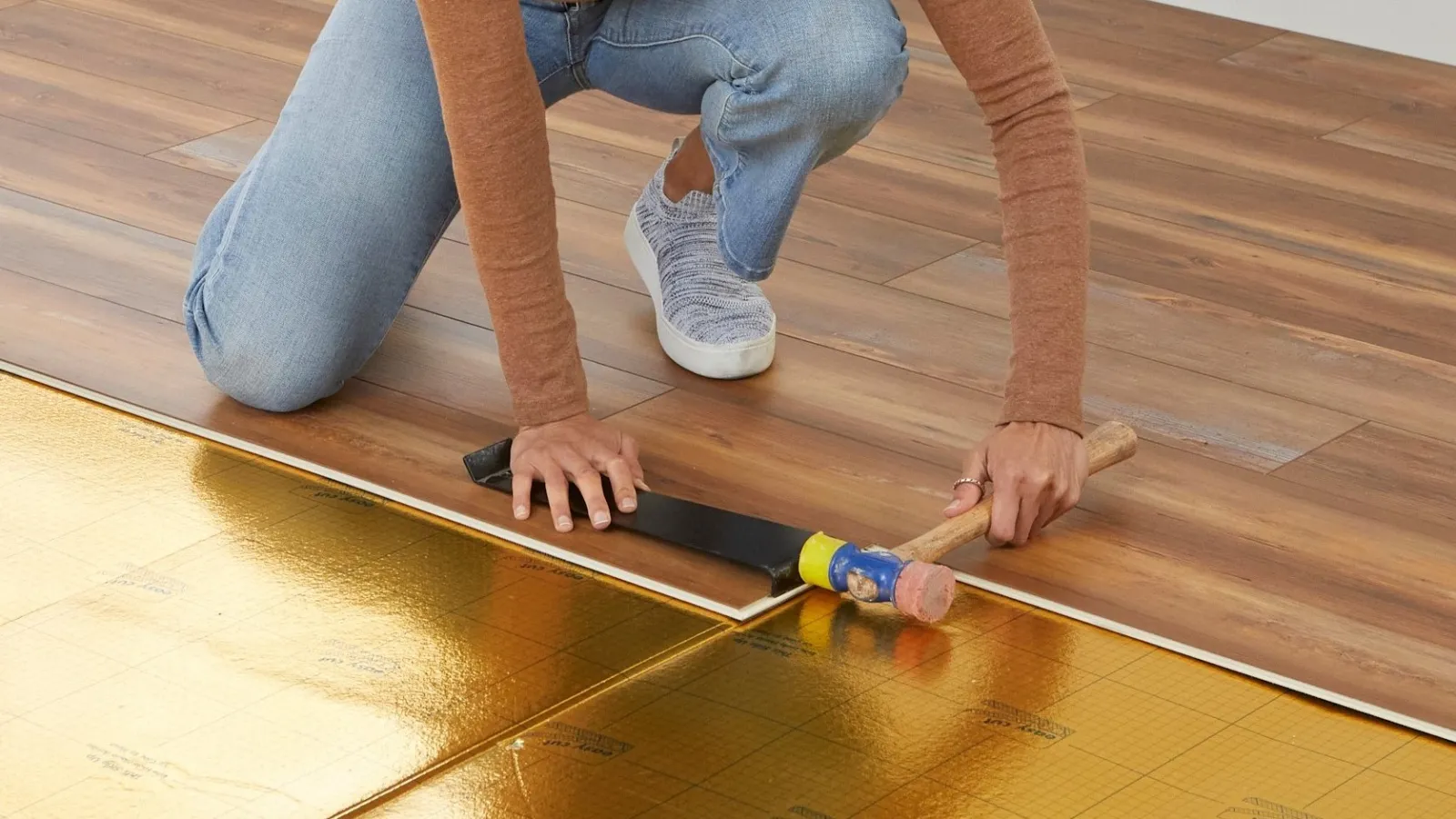
You Have Questions...
We Have Answers.
Laminate Underlayment
Frequently Asked Questions
Under what types of floors can the product be installed?
b. Click-Lock Floating Engineered Hardwood
c. Click-Lock Floating Bamboo
d. Not for use with vinyl or ceramic.
Can it be nailed through or glued down?
No, it cannot be nailed through or glued down.
Do you have to acclimate the Floor Comfort LVT Underlayment to the room for 48 hours like the flooring?
No, the Floor Comfort LVT Underlayment does not have to be acclimated.
Do you need to have a space/gap between the underlayment and the base board or walls?
This is referred to as an "expansion gap." No, space/gap is not needed between the underlayment.
Do the open and butt end seams need to be taped when installed on cement?
Yes, the open and butt end seams must be taped to ensure proper moisture protection. An aggressive water-resistant tape or underlayment tape is recommended.
Do you have to tape the perimeter of the room?
No, the perimeter of the room does not need to be taped. Always follow your flooring manufacturer's installation instructions.
Does it matter which way the boards go over the Floor Comfort LVT Underlayment?
No, it does not matter which way the boards go over the underlayment.
Will dents from walking on it affect the product or void the warranty?
No, dents and footprints will not void the warranty. Our XPS foam is designed to encapsulate minor sub-floor imperfections in the sub-floor to help make it level and smooth.
Will tears or punctures in the product affect the product’s performance or void the warranty?
Yes, you must tape over all tears, holes, and punctures when installed over concrete floors. Ensure they are sealed with Underlayment Tape.
Does the product have moisture barrier?
The Moisture Vapor Transmission Rate is .01 lb/24 hr/1000 sq. ft., which is the best in the industry.
Does the film side go up or down?
The film side goes up and the foam side goes down.
Can the product be used on cement, wood, plywood and Gyp-Crete® subfloors?
Yes, they can be used on cement, wood, plywood, and Gypcrete subfloors. Always follow your flooring manufacturer's installation instructions.
Can the product be used on suspected moisture problem floors?
It is not recommended to be used on moisture problem floors where a calcium chloride test shows moisture greater than 5 lbs./1000 SF /24 hours.
What is the R Value?
The R Value is 5.0 per inch.
Can your product be used for radiant flooring systems?
Yes, it can be used under radiant floors depending on thickness.
Is it good for sound and will it improve the sound quality in the room?
Will it take the hollowness, plastic or clicky sound out of laminate floors?
Will it help stop sound transmission from the above floor to lower?
Can it be installed under laminate with attached foam pad?
Do the grid lines have to line up from row to row?
Vinyl Underlayment
Frequently Asked Questions
Under what types of floors can the product be installed?
a. Luxury Vinyl Plank (LVP)
b. Luxury Vinyl Tile (LVT)
c. Stone Polymer Composite (SPC)
d. WPC floating planks over 3.2mm thick
e. It can also be used for laminate and engineered floating flooring
Can it be nailed through or glued down?
No, it cannot be nailed through or glued down.
Do you have to acclimate the vinyl underlayment to the room for 48 hours like the flooring?
No, the underlayment does not have to be acclimated.
Do you need to have a space/gap between the underlayment and the wall or baseboard?
This is referred to as an "expansion gap." No, an expansion space/gap is not needed for the underlayment.
Do the open and butt end seams need to be taped when installed on cement?
Yes, the open and butt end seams must be taped to ensure proper moisture protection.
An aggressive water resistant tape or underlayment tape is recommended.
Do you have to tape the perimeter of the room?
No, the perimeter of the room does not need to be taped. Always follow your flooring manufacturer's installation instructions.
Does it matter which way the boards go over the vinyl underlayment?
No, it does not matter which way the boards go over the underlayment. Please follow your flooring manufacturer's installation instructions.
Will dents from walking on it affect the product or void the warranty?
No, dents and footprints will not void the warranty or affect product performance. Our XPS foam is designed to encapsulate minor sub-floor imperfections in the sub-floor to help make it level and smooth.
Will tears or punctures in the product affect the product’s performance or void the warranty?
Yes, you must tape over all tears, holes and punctures when installed over concrete floors. Ensure they are sealed with Underlayment Tape.
Does the product have a moisture barrier?
The Moisture Vapor Transmission Rate is .01 lb/24 hr/1000 sq. ft., which is the best in the industry.
Can the product be used on cement, wood, plywood and Gyp-Crete® subfloors?
Yes, they can be used on cement, wood, plywood and Gyp-Crete® subfloors. The floor must be within the manufacturer's tolerances. Always follow your flooring manufacturer's installation instructions.
Can your product be used for radiant flooring systems?
Yes, it can be used under radiant floors.
Is it good for sound and will it improve the sound quality in the room?
Yes, it is excellent for sound.
Will it help stop sound transmission from the above floor to lower?
Yes, it will greatly reduce sound transmission to the room below.

